#estate of ruth asawa
Text

Ruth Asawa, Desert Plant, (lithograph), Tamarind Lithography Workshop, Los Angeles, CA, 1965, Proof outside the edition of 11 [Tamarind Lithography Workshop Archive, MoMA, New York, NY. © Estate of Ruth Asawa]
#art#drawing#lithograph#ruth asawa#tamarind lithography workshop#moma#the museum of modern art#estate of ruth asawa#1960s
204 notes
·
View notes
Photo
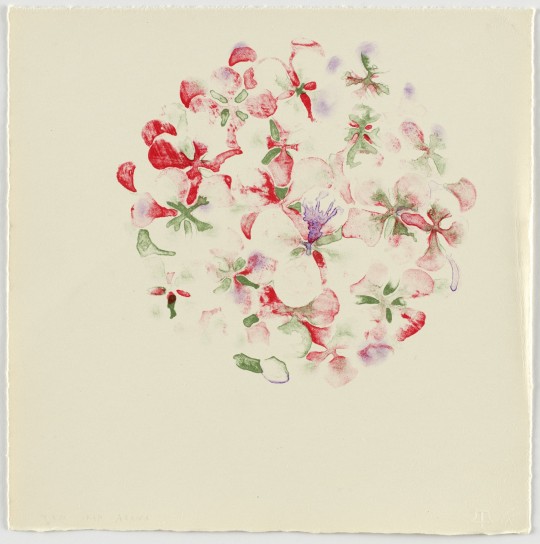
Ruth Asawa, Untitled, from ‘Flowers’, (portfolio of twelve lithographs, including title page and colophon), Tamarind Lithography Workshop, Los Angeles, CA, 1965, Proof outside the edition of 20 [MoMA, New York, NY. © Estate of Ruth Asawa.
35 notes
·
View notes
Text
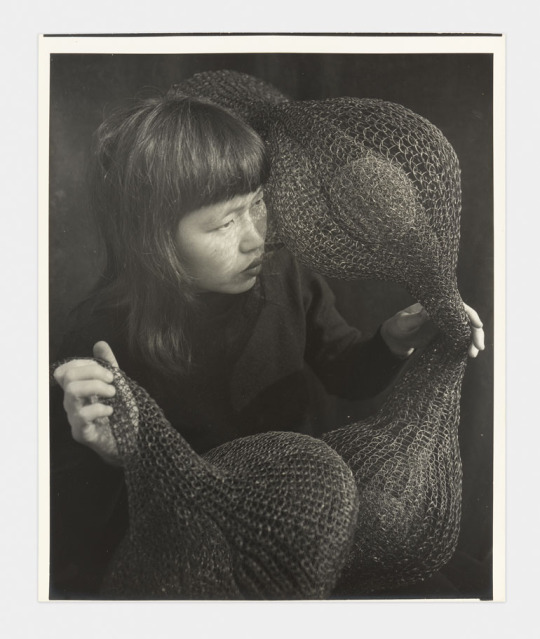
Ruth Asawa with hanging sculpture, 1952. Photography by Imogen Cunningham / Imogen Cunningham Trust. Artwork courtesy of the Estate of Ruth Asawa. Photography courtesy of David Zwirner, New York/London.
132 notes
·
View notes
Text
Gallery Spotlight: Jeffrey Spahn

This month we chatted a bit with Jeffrey Spahn, owner of – you guessed it! – Jeffrey Spahn Gallery. Our secret is that whether we want a quiet accent piece or a powerful centerpiece, we go to Jeffrey, whose collection of ceramics is both immaculate and encyclopedic. He also has a cat, Rothko, which it turns out is not like having a bull in a china shop.
Studio AHEAD: Tell us a little bit about how you came into the art world and how the gallery was founded.
Jeffrey Spahn: My background is as a professor of multicultural education at UC Berkeley. I then became an attorney who handled estate planning. I was lucky enough to handle estates of high net wealth individuals with art collections, who asked great questions – I saw a business opportunity and I never looked back.
SA: Any specific collections or pieces you've worked with in the past that were especially memorable or noteworthy?
JS: I’ve been lucky to work directly with the estates of many famous artists in the Bay Area, such as Ruth Asawa, Peter Voulkos, Claire Faulkenstein, Kay Sakamachi, Bob Stocksdale, Mildred Howard, Hing Liu, Judy Dater, and Jim Melchert, just to name a few.
SA: We notice a regional tradition runs through a lot of the pieces you sell. Can you speak more about this? We associate this tradition with Northern California, and regional art is integral to the pieces we choose in our designs (personally, we love the Peter Voulkos for sale).
JS: My inventory focuses on American, British, and Japanese post-war contemporary sculpture and design, both large-scale sculpture indoor and out, like that of Alexander Calder, Louise Nevelson, Isamu Noguchi.
Your clients are often looking for unique design objects that add to their sense of place. Because we are based in San Francisco some of our inventory includes Northern California artists, and you have often gravitated towards the best of the best from the San Francisco Bay Area including Voulkos, Viola Frey, Asawa, Jim Melchert, Sandy Simon, Nancy Selvin, Mark Goudy, Liza Riddle, Stocksdale, James Lavera, and many more.
SA: We also discuss Japanese ceramicists often when we are at your gallery. Is there a thread you see that connects Japanese and Northern California ceramicists?
JS: Yes, the Bay Area is part of the Pacific rim and has a diverse group of people including many Japanese artists. Your design often includes a sense of wabi-sabi, organic natural elements, earthy naturalistic design. Ceramics are some of the most beautiful design objects that express these natural sensibilities.
SA: You have curated a few shows both at your gallery and elsewhere. How do you tell a story through the pieces you select? And related, how can buyers tell their stories through pieces they own?
JS: Edit, edit, edit! Storytelling is often about focusing your attention on a specific moment in time or a specific idea. Artists are very clear when they make or design objects, so just listen, and don’t mess it up! I try very hard to not modify, add my spin, “bring it into today,” etc. In a show, when I am trying to tell a story the goal is to be authentic; so, if and when I’m asked by buyers and collectors, I tell them their collections should be authentic to their own values and who they are.
SA: Have you ever broken a piece?
JS: I don’t know why people often fear ceramics! Ceramics are some of the most durable art you’ll ever buy. Some of the most fragile artworks are paintings, which you can stick your finger through! Many ceramics have been fire-hardened at 2000 degrees or more and even if you break them a good restorer can put them back together. Every ancient culture throughout time is known to us through their ceramics which have survived thousands of years. One thing I encourage all collectors to do is to pick them up, to experience both the visual and tactile delight. Many of these pieces are functional, as vessels, used to serve food, display objects, flowers, and become an integral part of your life.
SA: Let us know the Instagrams of some makers in Northern California we should follow.
JS: Two artists: Liza Riddle and Mark Goudy, both ceramicists
Photos by Ekaterina Izmestieva
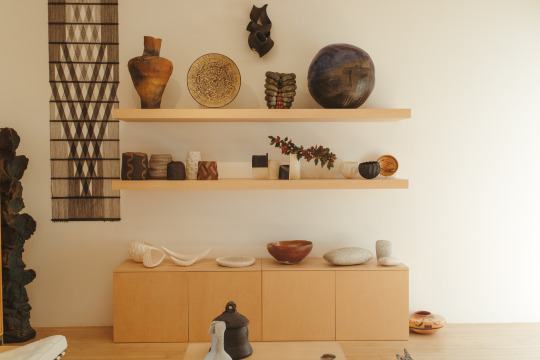

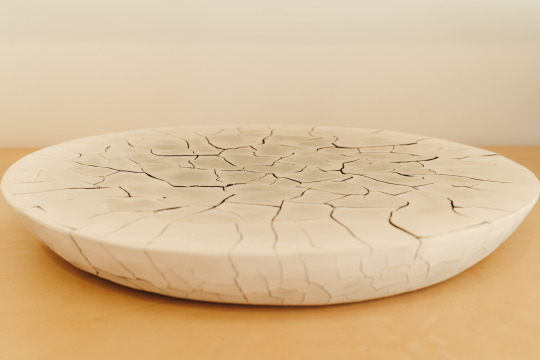


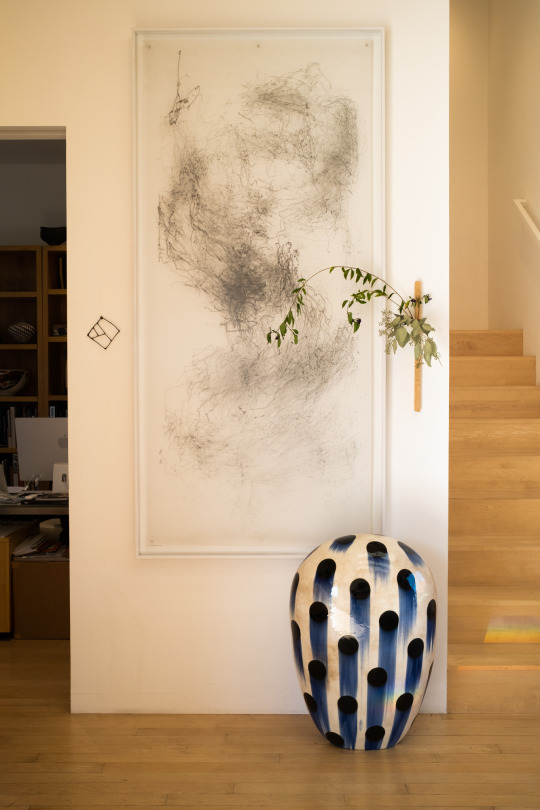

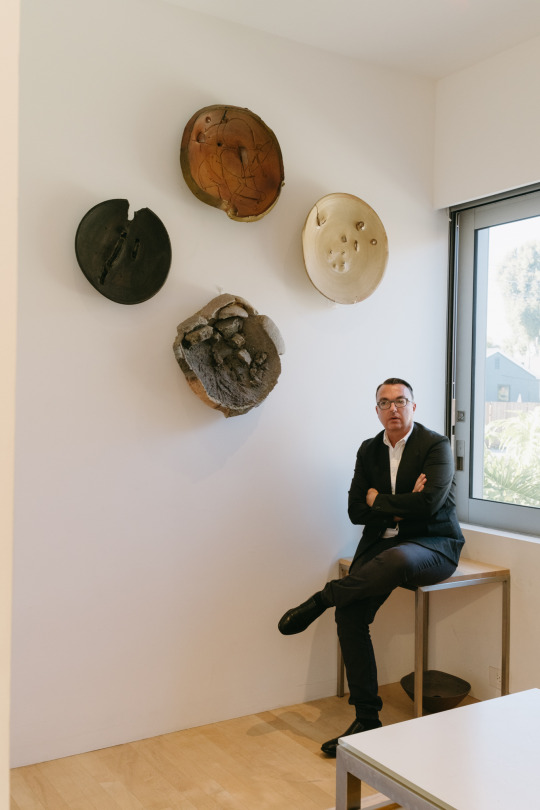

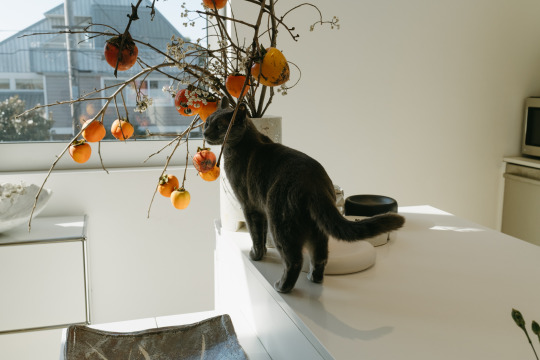
0 notes
Photo

A photograph of Ruth Asawa and her art taken by her close friend Imogen Cunningham circa 1957.
Photograph © Imogen Cunningham Trust and Estate of Ruth Asawa/David Zwirner Gallery
via: The New Yorker
611 notes
·
View notes
Text

Ruth Asawa, Untitled (BMC.85, Dogwood Leaves), c. 1946-1949, Oil and watercolor on paper, 10 ½ x 8 inches (26.7 x 20.3 cm), © Estate of Ruth Asawa. Courtesy David Zwirner, New York/London
3 notes
·
View notes
Photo

Ruth Asawa & Ida Vitale
HORA NONA
LEVÁNTATE,
echa a andar cada día
la rueda inerme por
los alrededores del centro verdadero.
Desvía el rayo del sol
del punto exacto
que lo descompone
en joyas tuyas.
Arde en la destrucción.
Serás ceniza y no tendrás sentido.
.
- Ida Vitale, de Jardín de Sílice.
- Ruth Asawa, Untitled (BMC.85, Dogwood Leaves), c. 1946-1949, Oil and watercolor on paper, 10 ½ x 8 inches (26.7 x 20.3 cm), © Estate of Ruth Asawa. Courtesy David Zwirner, New York/London
25 notes
·
View notes
Photo

Ruth Asawa [© Estate of Ruth Asawa] http://bit.ly/2X0099p
11 notes
·
View notes
Photo

Ruth Asawa, Untitled (BMC.85, Dogwood Leaves)
Artwork © Estate of Ruth Asawa / via: David Zwirner
18 notes
·
View notes
Photo

À l’occasion de l’exposition « Elles font l’abstraction », nous proposons chaque jour, en partenariat avec le @@centrepompidou, les portraits d'artistes femmes qui ont marqué l’art abstrait, des années 1860 aux années 1980. -- Les sculptures organiques de Ruth Asawa (1926-2013), formée au Black Mountain College dans les années 1940, sont marquées par son rapport étroit à la nature. -- Ruth Asawa et des Hanging Sculptures, vers 1958, photographie de Paul Hassel. Photo : Paul Hassel, Courtesy The Estate of Ruth Asawa and @davidzwirner. https://www.instagram.com/p/CQx2JjooOR8/?utm_medium=tumblr
0 notes
Photo
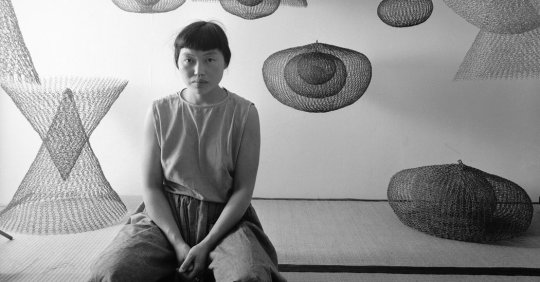
The Japanese-American Sculptor Who, Despite Persecution, Made Her Mark Asawa standing before trellised beans at the Rohwer War Relocation Center in Arkansas in 1943.Credit...Courtesy of the Estate of Ruth Asawa and David Zwirner …
0 notes
Photo
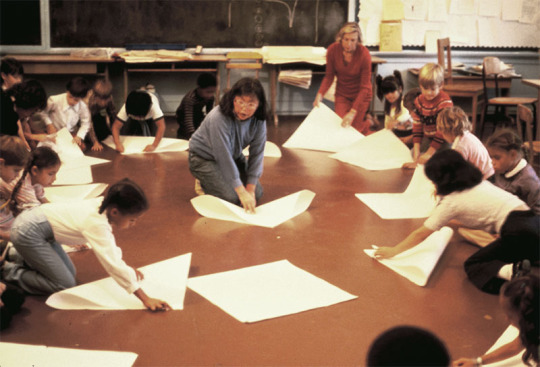
Ruth Asawa teaching paper folding, ca. 1980s [© Estate of Ruth Asawa]
1K notes
·
View notes
Photo
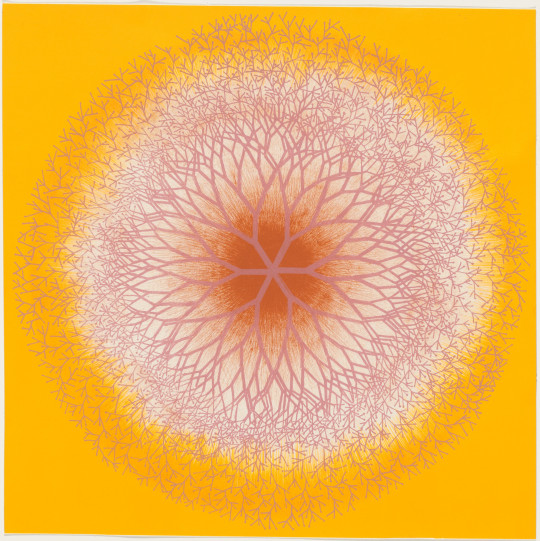
Ruth Asawa, Desert Plant, (lithograph), Tamarind Lithography Workshop Los Angeles, CA, 1965, Proof outside the edition of 11 Tamarind Lithography Workshop Archive, MoMA, New York, NY. © Estate of Ruth Asawa.
23 notes
·
View notes
Photo

Ruth Asawa, “Untitled (S.407, Hanging, Five-Lobed, Continuous Form within a Form with Two Spheres)” (c. 1952), hanging sculpture—copper wire, 61 1/2 x 15 x 15 inches, private Collection, New York (artwork © Estate of Ruth Asawa, courtesy David Zwirner, New York/London)
(via Ruth Asawa, a Pioneer of Necessity)
21 notes
·
View notes
Link
The history of American art is getting a rewrite at the David Zwirner gallery on West Twentieth Street, in a transporting show of sculptures by the little-known Ruth Asawa: diaphanous wonders, crocheted out of wire, that appear to be floating in space. (They hang from the ceiling.) In her use of line as sculptural form, Asawa provides a crucial link between the mobile modernism of Alexander Calder and the gossamer Minimalism of Fred Sandback, whose yarn pieces similarly render distinctions between interior and exterior moot. She hit on her singular process in 1947, at the age of twenty-one, while on a visit to Mexico, where she saw baskets in the process of being made. That domestic association has led to her work being marginalized, as was the case with so many female artists of her generation.
The addition of Asawa to art’s overwhelmingly white-male hit parade comes at a critical time in our country, as the policies of the current Administration challenge the undeniable fact that the United States is a nation of immigrants. Asawa’s parents were farmers, who emigrated to rural California from Japan. (“Sculpture is like farming,” the artist once said. “If you just keep at it, you can get quite a lot done.”) Asawa loved to draw as a child, but she didn’t have much time between chores. She began to make art in earnest while living in internment camps in California and Arkansas, in 1942-43; she received pointers from several fellow-detainees, who were animators at Walt Disney. She went on to study at Black Mountain College, where her mentors included Josef Albers, R. Buckminster Fuller, and Merce Cunningham, then settled in San Francisco with her husband, the architect Albert Lanier. She raised six children, but never stopped making art, and it would be inaccurate to suggest that she languished in obscurity until now. A solo show in New York, in the fifties, was favorably reviewed in the Times; her work was included in the São Paolo Biennial in 1955; she is in major museum collections and has several prominent public projects in San Francisco.
Of course, history is written by the victors, and, too often these days, winning means money. In 2013, four months before Asawa died, at the age of eighty-seven, one of her sculptures sold at Christie’s for nearly 1.5 million dollars—quadrupling expectations. The Zwirner show was curated (and exquisitely installed) by Jonathan Laib, who established a relationship with the artist while he worked at the auction house; when he moved to the gallery, so did Asawa’s estate. Part of me wishes that a museum had mounted this museum-quality show, perhaps the Whitney or MOMA, two institutions that have sensitively contextualized Asawa’s work in recent group exhibitions. But such gripes melt away in the presence of an ethereal copper-and-iron-wire concatenation from 1954—seven interconnected orbs, two of which surround smaller spheres like translucent cocoons. It hangs in front of a window overlooking a garden, enmeshing nature and art. Asawa, whose muses included sunlight on a dragonfly’s wing, would surely approve.
#Ruth Asawa#Japanese Internment#Japanese Internee#Artist#Art#Art History#History#Japanese American#Nikkei#Nikkeijin#David Zwirner
1 note
·
View note
Photo
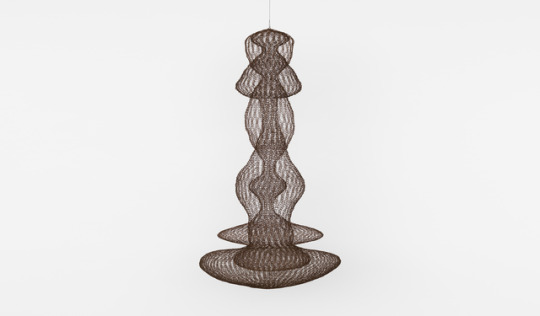
Ruth Asawa's “Untitled (S.531, Hanging Six Lobed,
Two Continuous Interlocking Forms)” from circa 1950.
© Estate of Ruth Asawa. Courtesy David Zwirner, New York/London.
#art#design#nature#organic#minimal#ruth asawa#1950#sculpture#forms#texture#david zwirner#iconic#unique#poetry
16 notes
·
View notes